
I imagine you have seen it happen before.
It happened to me recently, though not for the first time. I was on my way to the Goodwill to drop off some donated items. When I pulled up to a traffic light, I saw a man quickly get out of his car; by the look of frustration on his face, it seemed as if he may have been asked to leave the car. I couldn’t help but notice how demonstratively he walked over to the car idling next to him at the light. Words were exchanged. My distance from where this was taking place made the exact words unintelligible. but they sounded angry. Suddenly, the man who’d exited his car began to throw a series of fast and hard punches into the rear passenger window of the idling car. Before I could see what would transpire next, the traffic light changed, and I was off.
When the traffic light changed, it represented for me a welcome change, even something of an escape. I quickly left the scene and went about my own business, trying to pretend that this explosively violent event I had just witnessed had never happened. But as I drove away, a true but haunting line from theologian Cheryl Kirk-Duggan’s book Violence and Theology came to mind: “Silence is often a culprit.” [1] Seeking to complete my journey to the Goodwill, I realized that I had passed up the real “goodwill” by not doing or saying anything.
___________________________________________
Seeking to complete my journey to the Goodwill, I realized that I had passed up the real “goodwill” by not doing or saying anything.
___________________________________________
I thought of using my cell phone to call the police, but that idea brought with it two additional harrowing thoughts. The first was: “I certainly don’t want that guy at my door throwing punches at me.” Reinforcing this fear was the fact that I was living in, Philadelphia, a “no snitching” city, where fear of reprisal can easily discourage one from speaking out or taking a stand against perpetrators of violence. The second thought was of Ferguson, Missouri: “What if the police come and use excessive force, adding more violence on top of what I’d already witnessed?” I made the decision that it would be best to do nothing and quickly began to rationalize it by thinking, “I’m quite sure it will all be all right, someone else has probably called the police by now.”
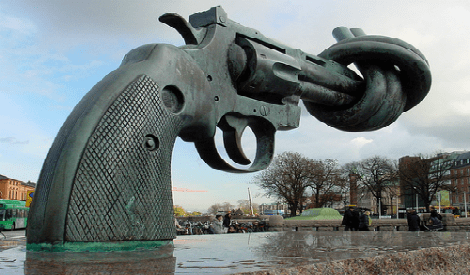
As I’ve reflected on this experience in the days and weeks since, however, I’ve begun to realize that, by and large, my feelings of fear and my inaction are largely the results of the way I’ve been conditioned by the all-too-regular threats of violence I see and experience in daily life. I don’t think I’m the only one who, albeit unintentionally, has been culturally conditioned this way. The ubiquity and banality of violence desensitizes us, and often, that very banality of violence is what prevents us from doing what is right to stop it.
We are living in a culture consumed by violence. According to the World Health Organization, more than 1.3 million people lose their lives to violence each year. Fictionalized or real, violence is ubiquitous; it seems to be all around us. From the news about drones, massive bombing campaigns against international enemies, and the growing number of professional athletes involved in domestic abuse cases to casual gossip about “Who beat up on whom?” on some “reality” show, it is clear that violence is too common a leitmotif in our culture. With the growth of digital media technology, violence as entertainment is made readily available for immediate consumption, whether through websites where anyone can access an amalgam of pictures and videos containing gory street fights or through video games depicting lifelike war scenes replete with “blood and guts” graphic imagery.
___________________________________________
Without hesitation, one of the youth answered, “We’re watching a YouTube video of one of our fellow youth group members get beat up after school.”
___________________________________________
Even more tragic, perhaps, is the fact that, our young people are the ones who have been most adversely affected by violence. According to the Center for Disease Control, more youth die from homicide each year than from cancer, heart disease, birth defects, flu and pneumonia, respiratory diseases, stroke and diabetes combined. They are also the ones most affected by the relationship between technology and quicker accessibility to lurid, violent images and motifs. Statistics show a disturbing trend: youth violence is on the rise domestically and is becoming a greater public health concern globally. [2]
 Personally, as a pastor who has worked with young people, I remember arriving one day at our weekly youth group meeting to find a handful of students huddled around staring at the screen of a laptop computer. Being curious, and a bit suspicious that they were looking at something inappropriate, I approached them and asked what they could possibly be watching so intently. Without hesitation, one of the youth answered, “We’re watching a YouTube video of one of our fellow youth group members get beat up after school.”
Personally, as a pastor who has worked with young people, I remember arriving one day at our weekly youth group meeting to find a handful of students huddled around staring at the screen of a laptop computer. Being curious, and a bit suspicious that they were looking at something inappropriate, I approached them and asked what they could possibly be watching so intently. Without hesitation, one of the youth answered, “We’re watching a YouTube video of one of our fellow youth group members get beat up after school.”
Violence is complex. It is chaotic and disjointing; it separates and divides. In the words of theologian Marjorie Suchocki, “Violence is the destruction of well-being.” [3] It fractures individuals as well as communities; in many cases, it destroys bodies and lives within communities.
___________________________________________
Proclaiming peace is risky work because it means that we cannot run away from violence. Instead, the cross challenges us to see Jesus in the midst of the struggle of those who are victimized.
___________________________________________
Hanging in my office is a print of Pablo Picasso’s famous work of art La Guernica. Painted in stark and bold colors, it is one of the most visceral illustrations I have ever encountered of the chaotic and destructive character of violence. Yet at the same time, in the context of the Spanish Civil War during which it was painted, it is also a profound statement of peace. Its bold bestial imagery makes a poignant statement of protest against the Nationalist forces of Franco and the oppressive powers of fascism in general. I would go so far as to call it one of the most powerful antiwar statements in modern art.

Photo Credit: pablopicasso.org
I am enamored with La Guernica for several reasons. First of all, it gets at the heart of the chaos and the uncertainty of violence. In his masterwork, Picasso captures the suffering and tragedy caused by war. The second reason is that it reminds me of the power of creativity to help us bring salient issues connected to violence and those who are affected by it to public attention. Picasso took La Guernica on tour, which helped raise awareness about the Spanish Civil War and the horrors of fascism and violence. I believe that this was Picasso’s way of ending an unbearable silence around what was taking place in his country. La Guernica is a widely acclaimed reminder that we can, that we must address violence through creativity and create awareness about the plethora of related issues that affect our communities.
___________________________________________
“One can interpret the cross as a judgment on all forms of domination and violence that exists in human societies.”
___________________________________________
In addressing the destructive and nihilistic character of violence, I am reminded often of Jesus’ words of peace in one of John’s post-resurrection narratives (John 20:19-23). The disciples, having witnessed Jesus’ crucifixion (and consequently hiding, afraid of being hunted down themselves), also get to be witnesses of ebullient grace and hope through a risen savior. Christ, who appears and defies barriers of fear, doubt, and death, greets and empowers the disciples with hope and peace. As their Risen Lord breathes new life and courage into the disciples, they encounter the incredible truth that violence does not ultimately destroy the message and power of the Prince of Peace. They learn that with the power of the Holy Spirit, faith overcomes fear. As a result, the disciples as messengers of peace recognize that they are called to also be practitioners of peace and wholeness in the world. Akin to the disciples, the same is true for us. As people called by and empowered with the Holy Spirit, we are called to do the same.
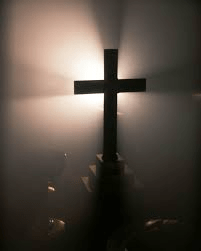 Proclaiming peace is risky work because it means that we cannot run away from violence. Instead, the cross challenges us to see Jesus in the midst of the struggle of those who are victimized. In the John text, the resurrected Jesus does not hesitate to show Thomas the marks in his hands and side, a reminder of the pain and struggle of the cross. In an article entitled The Cross and Male Violence, theologian James N. Poling gets at this idea of seeing Jesus in the midst of struggle, in stating: “One can interpret the cross as a judgment on all forms of domination and violence that exists in human societies.” [4] We as peacemakers and doers of justice also realize that the power of the Holy Spirit is alive, present and active in us. Christ “breathes” new life and purpose in us and calls us to be creative in cultivating ways of non-violence. The foundational document of the Presbyterian Peacemaking Program, Peacemaking: The Believer’s Calling, adopted by the 192nd General Assembly of the Presbyterian Church (U.S.A.), rightly points out the life-giving and affirming character of peacemaking as such:
Proclaiming peace is risky work because it means that we cannot run away from violence. Instead, the cross challenges us to see Jesus in the midst of the struggle of those who are victimized. In the John text, the resurrected Jesus does not hesitate to show Thomas the marks in his hands and side, a reminder of the pain and struggle of the cross. In an article entitled The Cross and Male Violence, theologian James N. Poling gets at this idea of seeing Jesus in the midst of struggle, in stating: “One can interpret the cross as a judgment on all forms of domination and violence that exists in human societies.” [4] We as peacemakers and doers of justice also realize that the power of the Holy Spirit is alive, present and active in us. Christ “breathes” new life and purpose in us and calls us to be creative in cultivating ways of non-violence. The foundational document of the Presbyterian Peacemaking Program, Peacemaking: The Believer’s Calling, adopted by the 192nd General Assembly of the Presbyterian Church (U.S.A.), rightly points out the life-giving and affirming character of peacemaking as such:
“God’s call to peacemaking is absolute. God is not a God of destruction, abandonment, or death, but a God of life, peace and joy who is jealous for a dynamic and full response from Christians called to be peacemakers in a warring world.” [5]
No matter how pervasive, how ubiquitous violence is or has been, we are called and strengthened by Christ to be messengers and practitioners of peace and wholeness. Empowered by the Holy Spirit and steeped in hope, we are called to elicit a “response” to violence with our faith. In these times, we cannot afford the luxury of being “culprits” of silence any longer.
_____________________________________________________________
[1] Cheryl Kirk-Duggan, Violence and Theology (Abingdon Press, 2006) 1.
[2] World Health Organization Fact Sheet 2012. http://www.who.int/mediacentre/factsheets/fs356/en/
[3] Marjorie Suchocki, The Fall To Violence: Original Sin In Relational Theology (Continuum Publishing, 1994) 85.
[4] James N. Poling, “The Cross and Male Violence” Cross Examinations; Readings On The Meanings Of The Cross Today. Ed. Marit Trelstad, (Augsburg Fortress Publishing, 2006) 51.
[5] The 192nd General Assembly of The United Presbyterian Church In the United States of America, Peacemaking: The Believer’s Calling (Office of the General Assembly, 1980) 17.
AUTHOR BIO: The Rev. Alonzo Johnson is the new Mission Associate with the Presbyterian Peacemaking Program. Alonzo has concluded his service as the pastor/head of staff of Oak Lane Presbyterian Church in Philadelphia, PA. He is a graduate of Louisville Presbyterian Theological Seminary (LPTS) and is currently a candidate for his Doctor of Ministry degree at LPTS. He is passionate about peacemaking and social justice issues and has rich experience in urban ministry with a focus on mentoring youth in the arts.

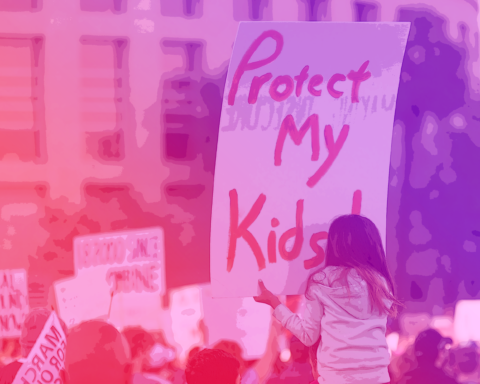
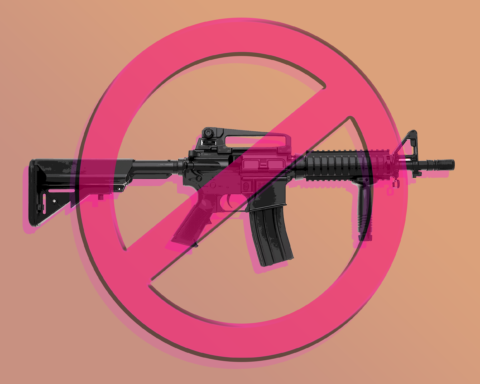
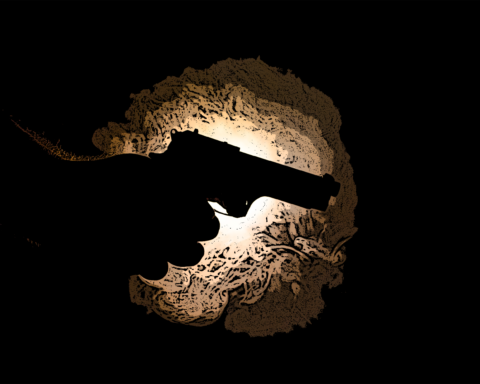

Unbound Social